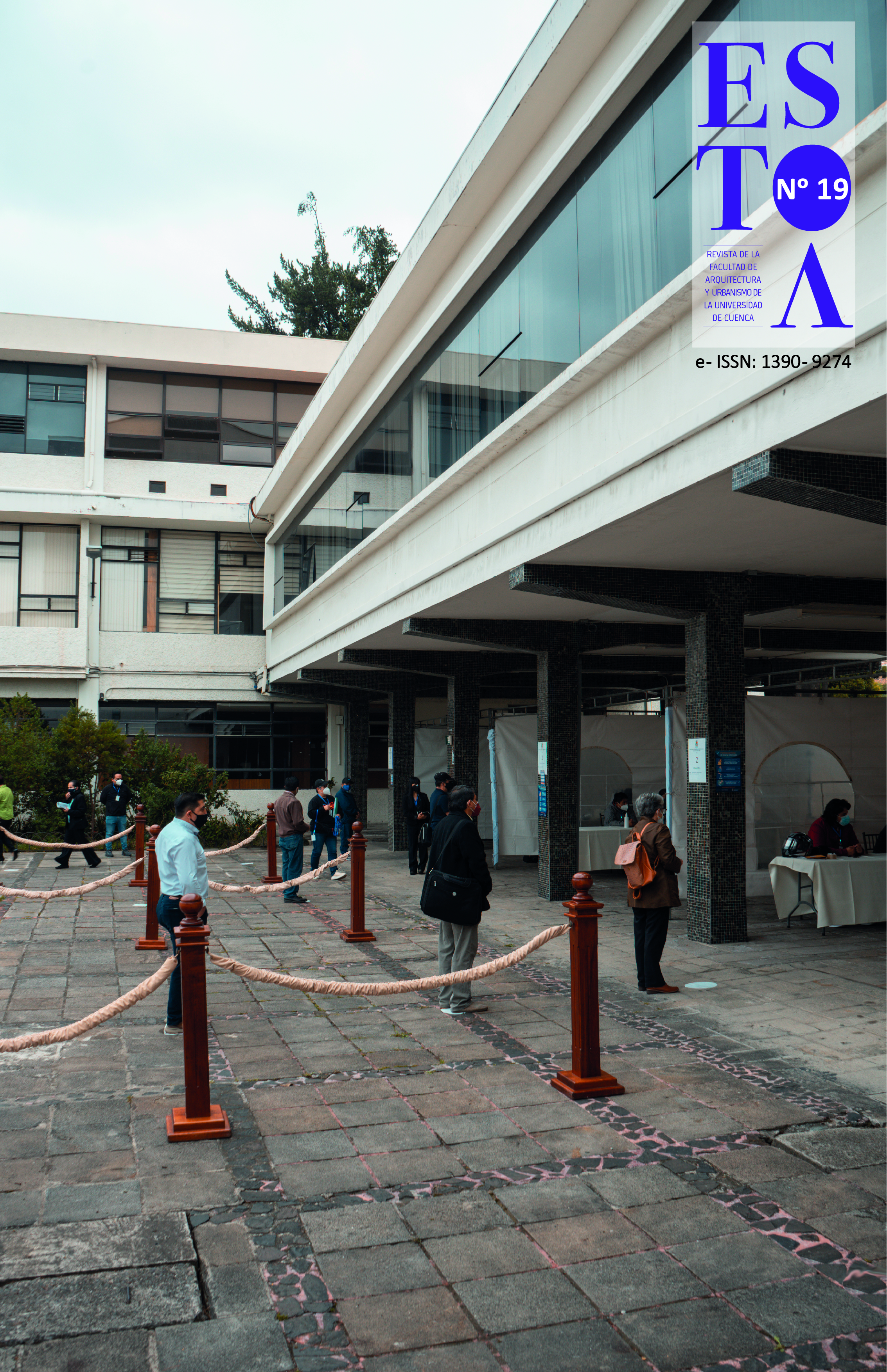The Neuroscience of Learning and the Somatic Poiesis of Architecture
DOI:
https://doi.org/10.18537/est.v010.n019.a05Keywords:
Neuroscience of learning, somatic poiesis, architectural projectAbstract
The neuroscience of learning is linked to the somatic poiesis of architecture. Pedagogy and didactics address this aspect during the professional training of the architect. Documentary grounded theory with a hermeneutic approach and transactional temporality was used for the demonstration. Data were collected using intertextual sheets applied to the neuroscience theory of learning and somatic poiesis of architecture. The outcome demonstrated that emotion and feeling of learning are related to the somatic deliberation of architecture in a distinctive pattern: problems generate an affective reaction in emotions, from which feelings conceptualize perceptions. Therefore, this condition of perception triggers the rejection or acceptance of the current architectural project influencing decision-making. The final conclusion was that, the relationship between the neuroscience of learning and the somatic poiesis of architecture affects the learning process, and the decision-making of the architectural project is based on emotion, feeling, deliberation and intuition.
Downloads
References
Altamirano, Y. (2018). Neuropsicología del aprendizaje y la enseñanza. Editorial San Marcos.
ANFA (2020). Academy of neouroscience for architecture. https://www.anfarch.org/about/mission/
Craig, A. (2014). How do you feel? An interoceptive moment with your neurobiological self. Princeton University.
Damasio, A. (1994). El error de descartes. La razón de las emociones. Editorial Andres Bello.
Damasio, A. (2000). Sentir lo que sucede. Cuerpo y emoción en la fábrica de la consciencia. Editorial Andrés Bello.
Damasio, A. (2007). En busca de Spinoza. Neurobiología de la emoción y los sentimientos. BROSMAC, S.L.
De Melo, J. (2012). Neurociencia + Pedagogía = Neuropedagogía: Repercusiones e implicaciones de los avances de la neurociencia para la práctica educativa. IEEE Engineering Management Review, 46(1), 80–90. https://doi.org/10.1109/EMR.2018.2810082
Fernández, A. (1971). El diseño entre la teoría y la praxis. Colegio Oficial de Arquitectos de Cataluña y Baleares.
Fernández, R. (2013). Inteligencia proyectual, un manual de investigación en arquitectura. Editorial Teseo.
Guillén, J. (2019). Neuroeducación en el aula. De la teoría a la práctica. Cegal.
Gutiérrez, L. (2018). Neuroarquitectura, creatividad y aprendizaje en el diseño arquitectónico. Paideia XXI, 6(7), 171–189. https://doi.org/10.31381/paideia.v6i7.1607
Hanna, T. (1988). Somatics Reawakening the mind´s Control of movement, Flexibility, and health. Da Capo Life Long.
Hernández, R. y Mendoza, P. (2018). Metodología de la investigación. Mc Graw Hill Education.
Lizana, X. (2017). La intersección entre arte y neurociencia. Anuario AC/E de cultura digital, 96–114.
Logatt, C. (2016). ¿Cómo influyen las emociones en el aprendizaje? Neurociencias y Neurosicoeducación, (83), 6–7.
Manes, F. (2014). Usar el cerebro. Editorial Planeta.
Maya, E. (2018). Los árboles de decisión como herramienta para el análisis de riesgos de los proyectos. Universidad EAFIT.
Osorio, J.J. (2015). Pedagogía del Proyecto en Arquitectura. Proyecto, Análisis, Composición e Idea. Arquetipo (9), 71-97. https://revistas.ucp.edu.co/index.php/arquetipo/article/view/474/476
Pallasmaa, J., Mallgrave, H. y Arbid, M. (2016). Architecture and neuroscience. Nord Print Ab.
Popper, K. (1991). Conjeturas y refutaciones. Ediciones Paidos.
Portero, M. y Carballo, A. (2017). Neuroeducació: aportacions de la neurociència als plantejaments educatius. Neuroeducation: contributions of neuroscience to educational approaches. Revista Catalana de Pedagogia, 11(07), 17–55. https://doi.org/10.2436/20.3007.01.85
Quaroni, L. (1980). Proyectar un edificio. Ocho lecciones de arquitectura. Xarait Ediciones.
Rodríguez de Torres, R. (2013). Del papel en blanco al blanco del papel. La enseñanza de la toma de decisiones en el oficio de la arquitectura. Universidad de Alcalá de Henares.
Rodríguez, R., Castaño, E. y Magaz, A. (2014). La enseñanza de la toma de decisiones en el proyecto de arquitectura. En International Conference Arquitectonics Network: Architecture, Education and Society. Final papers. Universitat Politècnica de Catalunya.
Rosas, R. (2008). Piaget, Vigotski y Maturana. Constructivismo a tres voces. Ed. Aique.
Rotger, M. (2017). Neurociencia neuroaprendizaje. Las emociones y el aprendizaje. Editorial Brujas.
San Martín, D. (2014). Teoría fundamentada y Atlas.ti: recursos metodológicos para la investigación educativa. Revista Electrónica de Investigación Educativa, 16(1), 104–122. https://redie.uabc.mx/redie/article/view/727
Sarquis, J. (2007a). 1 Ficción Epistemológica. Itinerarios del Proyecto La Investigacion Proyectual como forma de conocimiento en arquitectura. Bibliográfika de Voros S.A.
Sarquis, J. (2007b). 2 Ficción de lo real. Itinerarios del proyecto. La investigación proyectual como forma del conocimiento en arquitectura. Bibliográfika de Voros S.A.
Sarquis, J. (2014). Experiencias pedagógicas creativas. Bibliográfika de Voros S.A.
Strauss, A. y Corbin, J. (2002). Bases de la investigación cualitativa. Técnicas y procedimientos para desarrollar la teoría fundamentada. Editorial Universitaria de Antioquia.
Downloads
Published
Versions
- 2021-06-09 (2)
- 2021-01-27 (1)
How to Cite
Issue
Section
License
The Journal declines any responsibility for possible conflicts derived from the authorship of the works that are published in it.
The University of Cuenca in Ecuador conserves the patrimonial rights (copyright) of the published works and will favor the reuse of the same ones, these can be: copy, use, diffuse, transmit and expose publicly.
Unless otherwise indicated, all contents of the electronic edition are distributed under a Creative Commons Attribution-NonCommercial-ShareAlike 4.0 International License.




